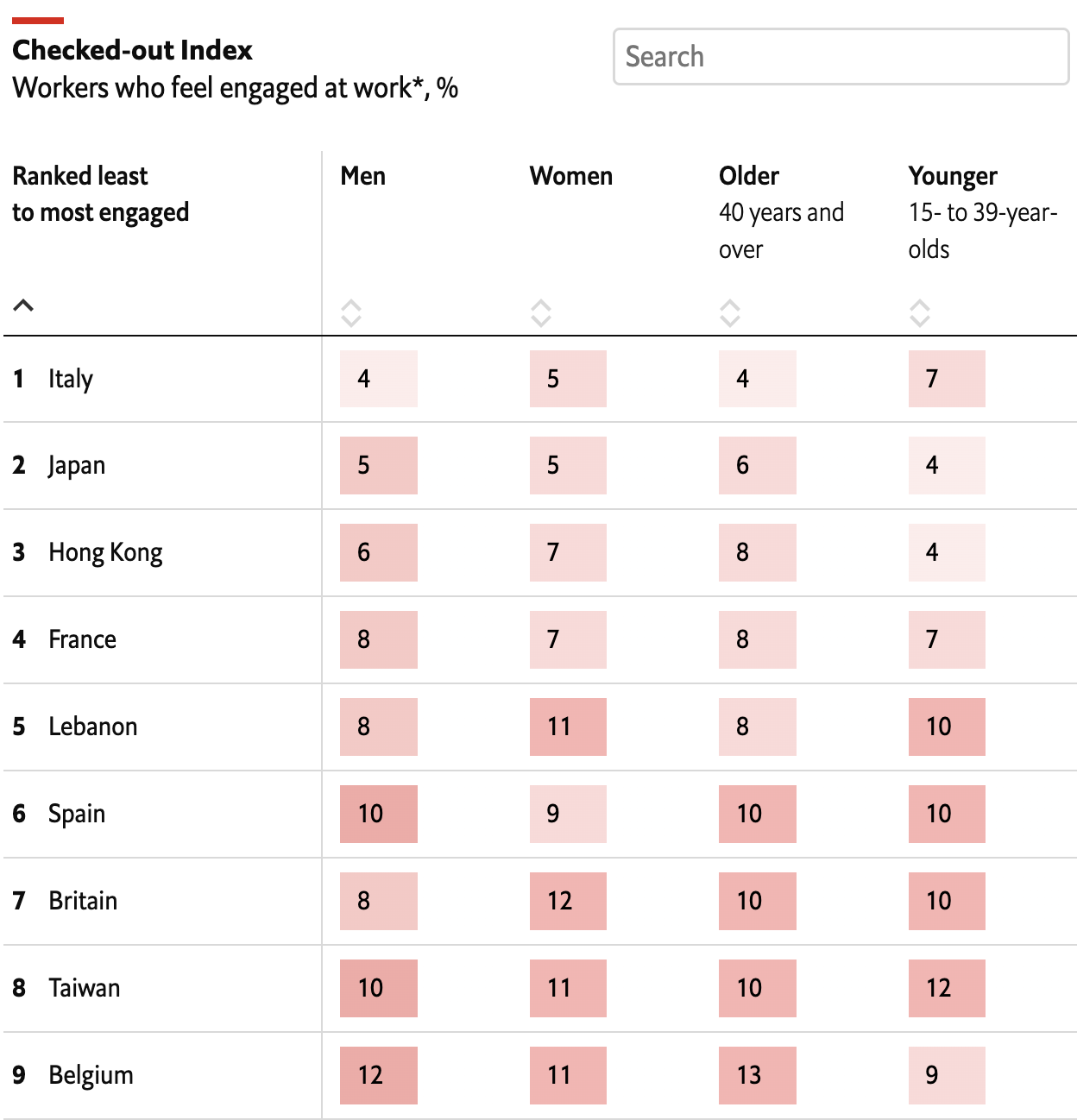A global index of workplace attitudes suggests that it is more widespread
It started with a TikTok video. Last year a 17-second clip that promoted doing the absolute minimum at work sparked a “#quietquitting” frenzy. The term is deceptive as well as hard to pin down: so-called quiet quitters seek to improve their work-life balance not by leaving their jobs, but merely by not going above and beyond their duty to their employers. Perhaps because chatter about quiet quitting took off on TikTok, it is often associated with Gen-Z—people born after 1996. But doing as little as possible at work is scarcely new (it may sound familiar to “work-to-rule” popularised by trade unions in the 20th century). And it’s not confined to the youngest workers.
Our charts below contain data from Gallup’s annual survey on workplace engagement across 143 countries, broken down by age and gender. We have filtered out countries where the data were missing or incomplete, reducing the number to 73. The results suggest that remarkably few people, just about anywhere, are happily engaged with their work.

Gallup asked respondents 12 questions to gauge their engagement with their jobs, including whether they feel their job is important and whether their colleagues are committed to doing quality work. The polling company then sorted respondents into three categories, depending on their combination of answers. Those who appeared most engaged were classed as “thriving”, meaning they are involved and enthusiastic about their work and workplace. At the other end of the spectrum is “loud quitting”, where people may be resentful and voice their unhappiness at work. “Quiet quitting” falls in between. These employees are thought to be putting in the time, but not much else.
The average of the 73 countries in our filtered version showed that 20% were thriving and 15% were loud quitters. The remaining 65% were quietly dragging their feet. Among big economies, America and India had the highest share of thrivers, though that was only around one-third. In Italy and Japan just 5% were thriving, the lowest shares in the sample.



*Based on respondents working in the formal economy. Excludes countries with incomplete data
Source: Gallup, State of the Global Workplace, 2023
Care needs to be taken before reading too much into international differences: some of the variation is likely due to differences in the way people in different countries interpret the questions. What does seem fairly clear, though, is that there was little correlation between attitudes to work and age. In our index, just 21% of those aged 40 and over were thriving, little higher than the 19% of respondents aged 15-39. Mongolia had the highest share of happy workers aged 15-39—at 36%—though only around half of the country works in the formal economy. North Macedonia was a close second—at 35%—compared with less than a quarter of those aged 40 and over. (Perhaps the country’s high youth unemployment helps to explain why: the young may consider themselves lucky to be in work.) Globally, women were slightly more likely than men to be engaged at work, by 21% to 19%.
The survey casts doubt on the notion that Gen-Z is especially workshy. It might also suggest there is a lot of untapped potential in the global workforce: more engaged workers might be more productive ones. But many Europeans, who the survey says are less eager than Americans, are also more productive by the hour. Doing their jobs adequately seems to be good enough.■